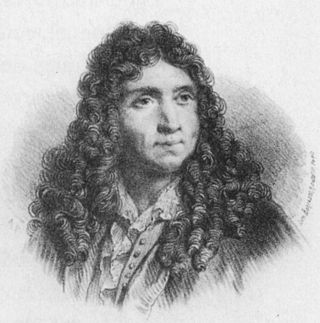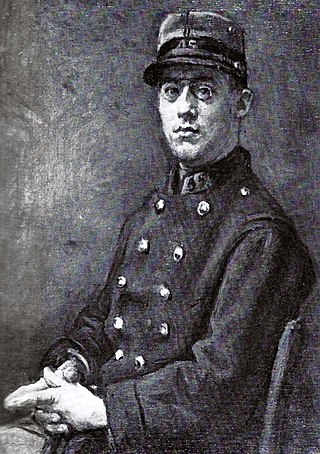
The pavane is a slow processional dance common in Europe during the 16th century (Renaissance).

"Les Six" is a name given to a group of six composers, five of them French and one Swiss, who lived and worked in Montparnasse. The name has its origins in two 1920 articles by critic Henri Collet in Comœdia. Their music is often seen as a neoclassic reaction against both the musical style of Richard Wagner and the Impressionist music of Claude Debussy and Maurice Ravel.

A suite, in Western classical music, is an ordered set of instrumental or orchestral/concert band pieces. It originated in the late 14th century as a pairing of dance tunes; and grew in scope so that by the early 17th century it comprised up to five dances, sometimes with a prelude. The separate movements were often thematically and tonally linked. The term can also be used to refer to similar forms in other musical traditions, such as the Turkish fasıl and the Arab nuubaat.

Daphnis et Chloé is a 1912 symphonie chorégraphique, or choreographic symphony, for orchestra and wordless chorus by Maurice Ravel. It is in three main sections, or parties, and a dozen scenes, most of them dances, and lasts just under an hour, making it the composer's longest work. In effect it is a ballet, and it was first presented as such. But it is more frequently given as a concert work, either complete or excerpted, vindicating Ravel's own description above.
This is an alphabetical index of articles related to dance.

Ma mère l'Oye is a suite by French composer Maurice Ravel. The piece was originally written as a five-movement piano duet in 1910. In 1911, Ravel orchestrated the work.
Désiré-Émile Inghelbrecht was a French composer, conductor and writer.

Pierre Beauchamp or Beauchamps was a French choreographer, dancer and composer, and the probable inventor of Beauchamp–Feuillet notation. His grand-father was called Christophe and his father, a violinist of the king's chamber, was simply called Louis. Following a custom of the time, Pierre Beauchamp was named Pierre after his godfather Pierre Vacherot, tailor of the queen's pages and a relative of the Beauchamps family.
Le Baiser de la fée is a neoclassical ballet in one act and four scenes composed by Igor Stravinsky in 1928 and revised in 1950 for George Balanchine and the New York City Ballet. Based on Hans Christian Andersen's short story Isjomfruen, the work is an homage to Pyotr Ilyich Tchaikovsky, for the 35th anniversary of the composer's death. Stravinsky elaborated several melodies from early piano pieces and songs by Tchaikovsky in his score. A commission by Ida Rubinstein from 1927, the ballet was choreographed by Bronislava Nijinska and premiered in Paris on 27 November 1928.

La valse, poème chorégraphique pour orchestre, is a work written by Maurice Ravel between February 1919 and 1920; it was first performed on 12 December 1920 in Paris. It was conceived as a ballet but is now more often heard as a concert work.
Sarabande and Danse may refer to:
Le Tombeau de Couperin is a ballet choreographed by George Balanchine to Ravel's eponymous orchestral music. The ballet features a cast of sixteen divided into two groups, dancing separately. Le Tombeau de Couperin was made for the New York City Ballet's Ravel Festival, celebrating the composer's centenary, and premiered on May 29, 1975, at the New York State Theater.
Sarabande and Danse is a ballet choreographed by John Clifford to Debussy's Sarabande (1901) and Danse (1890). The premiere took place on 21 May 1970, with New York City Ballet at the New York State Theater, Lincoln Center.
L'éventail de Jeanne is a children's ballet choreographed in 1927 by Alice Bourgat and Yvonne Franck.
Orpheus is a thirty-minute neoclassical ballet in three tableaux composed by Igor Stravinsky in collaboration with choreographer George Balanchine in Hollywood, California in 1947. The work was commissioned by the Ballet Society, which Balanchine founded together with Lincoln Kirstein and of which he was Artistic Director. Sets and costumes were created by Isamu Noguchi.
In G Major is a ballet choreographed by Jerome Robbins to Maurice Ravel's Piano Concerto in G Major. Performed by a cast of fourteen, the ballet featured Broadway-inspired choreography. The ballet was created for the New York City Ballet's Ravel Festival, which celebrated the centenary of Ravel, and premiered on May 15, 1975, at the New York State Theater, with Suzanne Farrell and Peter Martins originating the two lead roles.
Sonatine is a ballet choreographed by George Balanchine to Ravel's eponymous music. The ballet was made for the New York City Ballet's Ravel Festival, which celebrated the centenary of Ravel, and premiered on May 15, 1975, at the New York State Theater, following a preview performance the previous day. The ballet was originated by Violette Verdy and Jean-Pierre Bonnefoux.
Jerome Andrews was an American dancer and choreographer. He is remembered as a pioneer of modern dance in France.

The Sarabandes are three dances for solo piano composed in 1887 by Erik Satie. Along with the famous Gymnopédies (1888) they are regarded as his first important works, and the ones upon which his reputation as a harmonic innovator and precursor of modern French music, beginning with Debussy, principally rests. The Sarabandes also played a key role in Satie's belated "discovery" by his country's musical establishment in the 1910s, setting the stage for his international notoriety.







